This feature was taken from our special Running a Safe Fleet report.
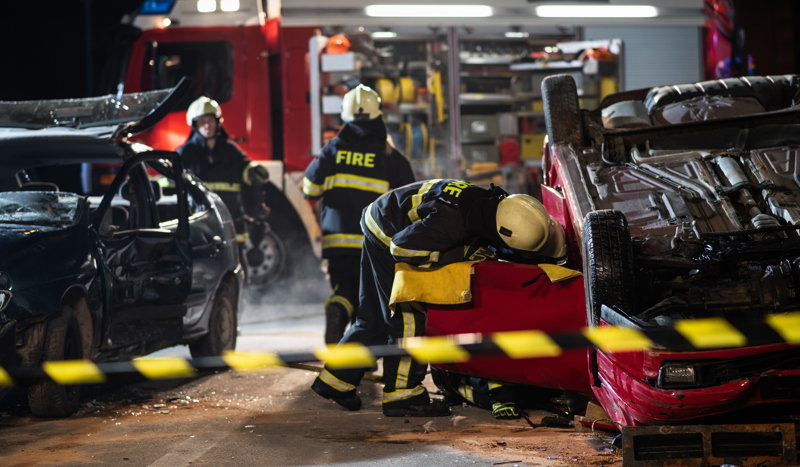
Keeping drivers safe is a key responsibility for all fleet decision-makers. At-work driving has the third highest risk of occupational mortality after deep sea fishing and mining.
A little less than a third (29%) of all UK road fatalities and a fifth (21%) of all casualties (killed, seriously injured and slightly injured) occur in driving-for-work collisions.
And, as well as fulfilling an employer’s duty of care responsibilities, an organisation that actively invests in a sound safety policy will find it has other wide-ranging business benefits. For example, it can reduce fuel and maintenance costs, cut vehicle downtime and shrink insurance premiums.
A safety culture can also positively influence driver behaviour in subtle ways. When employees understand that their organisation prioritises their well-being over everything else, it can foster a sense of responsibility and loyalty.
But, despite all these benefits, some employers do not give the same priority to fleet safety as they do the safety of the main function of their organisation, whether that be engineering, manufacturing or something else altogether.
This was the situation which faced Chris Connors when he joined Countryside Properties as its group facilities and fleet manager in 2015.
“In the business, we had a very reactive approach,” he says. “Something would happen, and then we would deal with it. In some cases we would manage collisions through just defaulting into recharging the business unit or recharging the driver.
“The challenge for me was to make fleet safety a priority within the business: it didn’t see the car, van or people driving for work as a real risk.”
Winning support
As part of his induction he visited one of the company’s construction sites. “There was an area where you had to fingerprint in, you had to read the safety information and get a permit to visit the site,” adds Connors, who now heads fleet and travel at ISS.
“There were big, clearly defined walkways. Much effort had gone into that site to make it as safe as possible because Countryside Properties realised that construction is a very dangerous industry.
“I thought ‘actually, the business gets safety’, and I came away with the confidence we could do something.”
His next step was to put context behind the risks involved in at-work driving and presented information to the company about how many people are killed or seriously injured in road traffic collisions, as well as how it had a duty of care for its drivers.
“The business then ‘got it’ and was very supportive,” he adds. “We had a health and safety department that was very good, we had an HR team that was really trying to make a difference and make Countryside an employer of choice by putting people at the front and centre of what it did.
“That allowed us to put safety at the front of everything we did from a fleet perspective because we wanted to have the safest fleet we could.
“We improved everybody’s perception of driving as a risk and this enabled us to reduce our accident rates as well as take advantage of all the benefits that come from that.”
Creating a safety culture which is communicated throughout the organisation also helps overcome the challenge of employees not considering their vehicle as a place of work.
“Having a top-down culture is really important,” says Andy Ormerod, managing director of Balfour Beatty’s Asset and Technology Solutions. “If the senior directors and managers are practicing what they preach, they create what I call a ‘leaders’ shadow’ which allows that culture to spread from within.”
Overcoming resistance
This allows widespread acceptance of the culture and any changes, helping overcome any reluctance from drivers to accepting new training regimes, policies, or responsibilities.
“Lots of organisations have DSE (display screen equipment) assessments for people working in the office and policies surrounding office working but, actually, when you’re driving for work, the vehicle is your office,” says Miranda Faulconbridge, head of driver safety at Telent Technology Services.
“We have to apply the same health and safety rules. If you’re driving for us on business, we want your vehicle to be safe and we need you to be safe. It doesn’t end when you get in the vehicle. It’s throughout your day, whether you are driving, whether you’re on site, whether you’re at home, the same set of health and safety principles apply.”
The creation of a safety culture needs to be supported by a clear strategy.
This should outline the goals of the employer so the drivers know what is expected from them and why, and these should be communicated clearly to all staff.
A comprehensive risk management policy should be developed, supported by training and the right systems to monitor performance.
A successful change to the culture could also bring operational changes. For example, road safety charity Brake recommends organisations should set realistic schedules for drivers that put safety before performance targets.
Setting demanding work targets can encourage drivers to take unnecessary risks, such as speeding, it says. World Health Organisation research found every 1% increase in speed raises the risk of a fatal crash by 4%.
Other actions which can be taken by the wider organisation to improve driver safety can include changing the way employees travel – if at all – to reduce risk.
For example, Brake recommends employees should be able to use active or public transport, or telephone- or video-conferencing instead of travelling to meetings.
Route-planning can also have a role to play: software priorities can be set to avoid areas where people live and work, while accident blackspots can also be avoided.
Company-wide review
Around two years ago, M Group Services Plant and Fleet Solutions, which supports M Group Services in its operations, launched an initiative to improve fleet safety.
It first conducted a board-level review in a bid to understand what controls it had in place across all 18 operating businesses.
The project group consisted of a nominated director and all safety, health, environment and quality (SHEQ) leads, supported by transport professionals from across M Group Services.
The review detailed exactly how the group interacted with staff regarding responsible driving, from onboarding and licence-checking to driver profiling at either the start of employment or during employment (for existing staff), to providing clear instruction, training and supervision, an ongoing monitoring through its telematics portal. By creating this working group, Tony Draper, head of SHEQ and road risk at M Group Services Plant and Fleet Solutions, says they achieved engagement with the senior stakeholders and the board.
“We know we needed a group-wide minimum standard so the occupational road risk standard is a critical underpinning pillar to the delivery,” he adds.
“It sets the standard we expect every business to operate at. They can build on it, improve it, but that’s the very least we expect.”
The profile of a safety culture can be elevated both internally and externally by formally incorporating it into an organisation’s stated values.
Balfour Beatty, for example, conceived its Zero Harm terminology in 2008 as a succinct way to define its risk management strategy and has since implemented a series of initiatives which have resulted in a 65% cut in at-fault incidents across cars, LCVs and HGVs since 2011.
“Using the Zero Harm umbrella helps us with communication, the visibility of the message, the visibility of material that shows data around how much money we're saving, the business benefits and the life-saving benefits,” says Ormerod.
“We constantly bang the drum, constantly focus on that culture, the visibility of the messaging and holding each other to account.”
Many other organisations have adopted the same or similar ‘Zero Harm’ terminology to embed safety into their company operations.
‘Serious about safety’
Univar Solutions, for example, has ‘serious about safety’ as one of its five universal values. The others are ‘we do what we say’, ‘where people matter’, ‘valuable to others’ and ‘together we win’.
“These values have been written by a number of people across each country to ensure that every part of our business embraces each of them every day,” says Mark Woodworth, transportation director EMEA at Univar.
“They have been constructed so you can link them to pretty much any situation.
“Our people are our most important asset. Without our people we don’t exist, we don’t function, so we need to make sure people go home safe at the end of the day.
“Our values put people ahead of sales, people ahead of profit and people ahead of customer service.”
Woodworth says the company culture means employees are encouraged to question safety.
“We never assume that because we’ve done something the way we’ve done it for the past 27 years, it is the best way to do it,” he says.
“We never question somebody who raises a safety concern; we act on it, we review it, and then we take whatever steps we need to do to make sure that person is left comfortable.”
As a chemical distributor, Univar’s highest risks are work-related road risk and chemical discharge, and part of the company’s culture is to enable jobs to be stopped if there are safety concerns.
Last year, its transportation function stopped more jobs than any other team in the business.
“As you can imagine, if a driver doesn’t particularly want to do a job they might stop it and we will then work with them to say ‘why did you stop the job? What is your concern?’,” says Woodworth.
“Let’s address your concern, let’s get a team of H&S professionals out, let’s work with the customer, and, once we agree it is safe to continue, the job carries on.
“One thing I like about the business is that it sees stopping the jobs as a good thing.
“Many times in my career I’ve thought ‘health and safety, what now?’, but actually they’re your biggest friends when you really need them.
“If you get your processes right, and you get everything as you agree to do, no matter what happens, you’re normally ok in the end.”
Involve everybody
Putting driver safety at the forefront of company operations will mean more people than just the drivers and fleet team are involved.
All employees are treated equally, whether they are a director, manager or engineer; people also respond better if processes are transparent and equal. No one likes to be treated unfairly.
Univar Solutions changed its management structure to recognise the importance of fleet safety to the company.
When Woodworth joined the company more than three years ago, it had a siloed approach to how it managed fleet vehicles and transport.
“Every site did their own thing,” he says. “Every transport manager had their own log-in to the Traffic Commissioner’s Office, their own camera system, their own telematics system, etc.
“We standardised that and created our own team management structure: one for the UK, and for every country across Europe, and then up into European leadership team around transport.
“This helped make sure that not only are our planners completing the job correctly, and not over-planning for drivers, making their days unachievable and causing drivers to rush. It meant the whole business has the same common goal and is buying into fleet safety.”
You could be forgiven for thinking that all fleet managers are interested in these days is electric vehicles: how to transition, charging, reimbursements and so on. Such discussion dominates opinion pieces, media column inches, social media discussion and even webinars.
Yes, it’s a juicy topic. No, it’s not what most fleet decision-makers are spending all their time thinking about.
This report on running a safe fleet looks at how to create a safety culture and implement a driver behaviour programme, as well as tackle root causes of accidents, in discussion with fleet leaders and industry experts with the sole purpose of helping you to deliver a robust risk and compliance policy, protecting both your staff and your business.
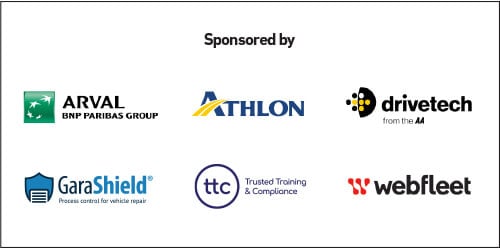



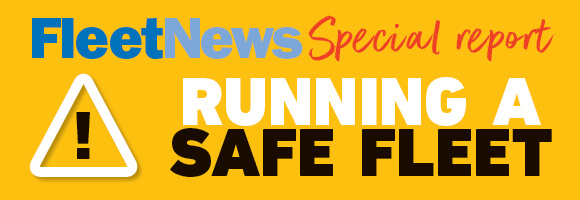




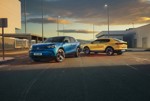




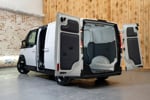







Login to comment
Comments
No comments have been made yet.